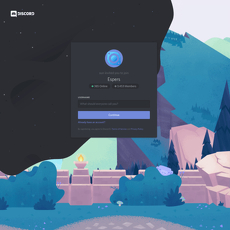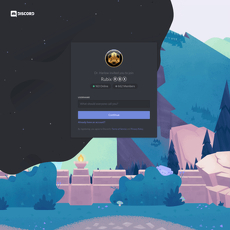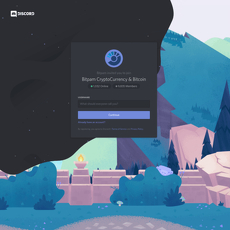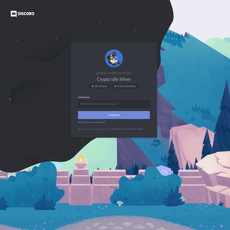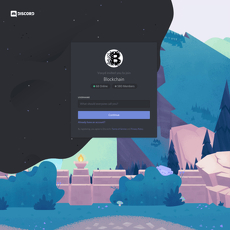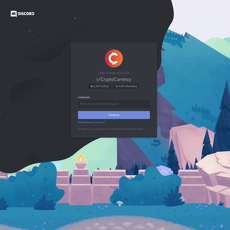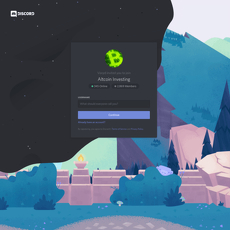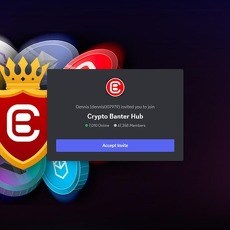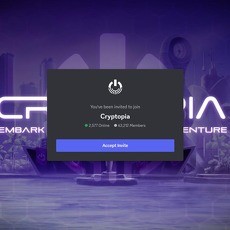Crypto Rand's Group Review
Crypto Rand's Group
discordapp.com
Crypto Rand’s Group Review Guide: Everything You Need to Know + FAQ
Ever opened five crypto Discords, got six different BTC calls, and felt your brain melt before your coffee cooled? If you’re wondering whether joining Crypto Rand’s Group can actually sharpen your trading—or just add to the noise—you’re exactly who I wrote this for.
I’ve spent years testing crypto communities, and I care about one thing: real value you can use without blowing up your account or your calendar. This is a practical, no-hype look at what you can expect inside Crypto Rand’s Discord, who it’s right for, and how to approach it without getting wrecked by FOMO.
The real problems traders face with crypto Discords
Most traders don’t fail for lack of charts—they fail from too many conflicting voices and too little structure. Here’s what I see over and over:
- Signal overload: Ten servers, twenty charts, zero conviction. You end up chasing, not trading.
- Mixed quality: Some calls are thoughtful. Others look like “hopeium.” Telling them apart is hard in real time.
- FOMO spiral: A ping hits, you buy late, then watch price “return to origin.” Behavioral finance research shows that reactive trading tends to underperform—see Barber & Odean’s classic work on overtrading and lower returns (SSRN).
- Confusing paywalls: What’s free vs. paid? Are upgrades worth it? Many servers keep this murky on purpose.
- Unclear track records: Screenshots of wins, silence on losses. If you can’t verify it, it’s marketing—not data.
- The money question: “Can I actually make money with crypto signals?” Some do—but almost always with strict risk rules, not blind copying. Most day traders lose money without a system (evidence from day-trading studies suggests only a small minority consistently profit—e.g., Barber et al., Taiwan dataset: SSRN).
“Trading is hazardous to your wealth.” — Barber & Odean
So the bar for any paid Discord is simple: is it structured, transparent, and actually helping you trade better—or just pinging you into emotional decisions?
What I promise to solve for you in this review
If you’re considering Crypto Rand’s Group, I’ll make your decision faster and safer. I’ll show you:
- What’s inside: How the server is structured, what content appears where, and how to navigate it without drowning in pings.
- Signals and education: The style, clarity, and risk focus of the calls and charting you’ll see.
- Costs and value: Free vs. premium—what you actually get, not just the sales copy.
- Who it fits: Active day traders, swing traders, or learners building a system—where it shines and where it won’t help.
- How I’d use it: A practical workflow to avoid FOMO, validate setups, and keep risk consistent.
I’m not here to sell you a dream. I’m here to help you decide whether this community earns a place in your process.
Who is Crypto Rand and why people pay attention
Crypto Rand is a long-standing market analyst known for clean charting, trend reads, and a steady presence on X (formerly Twitter). The group attracts traders who want:
- Clear technical perspective: Levels, trend bias, and structured trade ideas rather than hype.
- Balance of signals and learning: Not just “buy/sell,” but the why behind setups.
- Community accountability: Fewer meme posts, more trading process.
That reputation is why the Discord draws attention in trading circles: people want fewer noisy debates and more consistent frameworks. Whether it delivers on that is exactly what I’ll unpack.
What this review covers (and what it doesn’t)
Here’s how I judge a crypto Discord—and how I’ll judge Crypto Rand’s Group:
- Value: Does it speed up your analysis and improve your decisions?
- Usability: Is the layout efficient? Can you mute what doesn’t matter?
- Transparency: Are calls archived, outcomes discussed, and losses treated honestly?
- Fit: Is it better for active scalpers, swing traders, or learners?
What I won’t do:
- Hype or guarantees: No server can promise profits. Signals are tools, not shortcuts.
- Cherry-picked screenshots: I care about repeatable process, not highlight reels.
- Financial advice: This is educational. Your risk, your decisions.
If you’ve been burned by low-quality signals or exhausted by noisy communities, you’ll find this review refreshingly practical. I’ll show you exactly how to approach Crypto Rand’s Discord to reduce noise, set expectations, and protect your capital.
Curious what the server actually looks like inside—public vs. premium areas, where the key channels live, and how to set notifications so your phone doesn’t hijack your trades? That’s next. Want the fastest way to onboard without getting spammed?
What is Crypto Rand’s Discord and how it works
Server layout at a glance: public vs. premium areas, core channels, and how to navigate efficiently
Crypto Rand’s server is split into two clean zones: a free front door for community and news, and a premium wing for structured signals and education. That separation actually helps reduce noise. Here’s the typical layout you’ll see (channel names may shift over time, but the structure is consistent):
- Public area – Free to join via https://discord.gg/rand
- #start-here / #rules – Ground rules, basic FAQs, scam warnings.
- #announcements – Platform updates, scheduled events, maintenance notes.
- #general-chat – Open discussion; good for gauging sentiment but easy to mute if you’re focusing.
- #news-feed – Aggregated headlines or curated news; helps you time your sessions around catalysts.
- Premium area – Where the real value sits if you’re paying
- #market-scan – Snapshot of the day’s bias, key levels, and pairs to watch.
- #setups-spot / #setups-futures – Structured entries with invalidation, targets, and notes.
- #education / #chart-breakdowns – Explanations behind the setups; helpful if you’re building your own plan.
- #watchlist – Tickers on deck with price levels; great for pre-marking your charts.
- #voice-lounge / AMAs – Real-time Q&A and market read-throughs during key sessions.
- #trade-recaps – Post-mortems on plays, wins and losses; accountability matters.
- #support – Billing or tech help, typically responsive.
Pro tip: I group these channels into two mental buckets—prep (#market-scan, #watchlist, #education) and execution (#setups-spot, #setups-futures). I check prep first, then execution. That simple habit stops me from chasing a ping without context.
“Trade the plan, not the ping.” Signals are only as good as your ability to execute calmly.
Onboarding: how to join, verify, set roles, and tune notifications so you don’t get spammed
Joining is straightforward, but the magic is in configuring notifications so you actually stay sane.
- Step 1 — Join and verify
- Hit the invite: https://discord.gg/rand
- Complete the bot verification/captcha in #verify to unlock channels.
- Step 2 — Pick roles
- Role selectors usually live in #start-here or #roles. Opt into what you want: spot, futures, education, voice.
- Fewer roles = fewer pings. Add back slowly if you feel you’re missing context. See Discord’s role basics: Role Management 101.
- Step 3 — Tame notifications
- Right-click the server icon → Notification Settings → Only @mentions.
- Toggle Suppress @everyone and @here. Then unmute only the critical channels: #setups-spot, #setups-futures, #market-scan.
- Set per-channel overrides so you get push alerts only for setups. Guide: Discord Notification Settings.
- Optional: add Keyword Alerts for pairs you actually trade (e.g., BTC, ETH, SOL). This cuts noise and reinforces your plan.
Why this matters: research from UCI shows interruptions can take over 20 minutes to fully recover from, wasting focus and spiking stress (Mark et al., UCI). Crypto pings can be addictive—especially when FOMO kicks in. If you’ve ever felt that anxious pull to “just check,” that’s a real phenomenon studied in the FOMO literature (Przybylski et al., 2013). Your setup above reduces the urge to chase and keeps you executing.
Community culture: mod presence, tone, rules, and how friendly it is for beginners vs. advanced traders
The server’s tone is firm but not cold. Mods are visible, and rules discourage the usual pitfalls—unsolicited DMs, “moon” hype, and untagged spoilers during live trades. That keeps conversations on rails and reduces the low-value noise that burns your time.
- Mod presence – You’ll see moderation most during active market hours and around event days. Spam gets cleared fast; scammers get the boot.
- Beginner-friendly – New traders are welcome to ask “why” in education threads and AMAs. You’re pushed to learn the logic, not just copy entries.
- Advanced traders – There’s room for nuanced discussion: invalidation nuances, liquidity zones, and execution tactics for different venues.
- Zero tolerance for DMs – As always in crypto: never engage with “admin” DMs. Real staff won’t ask you to connect wallets or send funds.
What I like most is the accountability vibe. When a setup invalidates, there’s a quick note. When it hits, it’s not a victory parade—just data. The culture rewards process over chest-thumping, which is rare and valuable.
Content cadence: how often signals, analysis, and updates show up across different market conditions
Cadence adapts to volatility. That’s a good sign—static posting schedules in fast markets can be dangerous. Here’s the rhythm I typically see:
- Before key sessions – A #market-scan or watchlist update outlining the day’s bias, critical levels, and pairs on radar.
- During volatility – More frequent signals and micro-updates with clear invalidation. Expect quicker notes around CPI/FOMC, big listings, or BTC near inflection levels.
- Choppy conditions – Fewer trades, more patience. You’ll see emphasis on education and “no-trade” reminders—useful protection against overtrading.
- Weekly structure – A higher-timeframe outlook (often at week start) plus midweek check-ins. When the market is trending, swing setups get more airtime; when it’s range-bound, scalps or hedged plays may show up.
- After trades – Follow-ups in #trade-recaps or in-thread: whether it hit, missed, or got invalidated, with notes to learn from.
Don’t gauge quality by sheer volume. In my experience, the better days are often quieter—precise updates, fewer pings, more clarity. When a group can say “sit out,” that’s a green flag.
Curious what those signals and lessons actually look like once you’re inside—the entries, invalidation logic, and the tools supporting them? Ready to see how to turn those posts into a repeatable routine you can trust under pressure?
Features and content: signals, education, tools, and extras
I joined to answer a simple question: will this server actually help you trade better without adding chaos to your screen? Here’s what I found inside, and how I’d use it day to day.
Signals overview: what types, what’s included, and timeframes
Expect a blend of spot swings, futures levels, and occasional scalps, clearly labeled so you know the intended pace before you click anything. The best part is that signals aren’t just “buy/sell” pings—they come with context and a plan.
- Types you’ll see
- Spot swing setups on BTC/ETH and liquid alts, geared for multi-day holds.
- Futures levels with both breakout and mean-reversion ideas, typically intraday to multi-day.
- Scalps during high-volatility windows; tighter stops, faster invalidations.
- Timeframes: from M5/M15 for scalps up to 4H/1D for swings. Each post tags the timeframe and expected holding period.
- What a typical signal includes (the format matters more than the ticker):
- Entry (exact level or range) and whether to scale in.
- Stop-loss and invalidation (what must not happen).
- Targets (partial take-profits) and risk/reward.
- Thesis: why the setup exists (structure, trend, liquidity, catalyst).
- Chart link with drawn levels so you aren’t guessing.
Illustrative example of the format I’ve seen used:
- Pair: ETH/USDT (Spot Swing)
- Entry: 0.5–0.618 pullback into prior breakout (chart attached)
- Stop: below last higher low; invalidation on 4H close under structure
- Targets: TP1 local high, TP2 weekly level, runner to trend extension
- Notes: “Confluence with 4H trend, funding normalized, BTC.D steady”
What I like: signals often state the reason for the trade. That one line (“trend + structure + funding reset”) saves beginners from blind copying and reminds experienced traders to check confluence before sizing up.
“Trade the plan, not the hopium.” Your stop is your seatbelt—you only miss it when you crash.
Education and market analysis: how the charts and bias actually teach you
Signals get you in; the education teaches you when not to play hero. Inside you’ll find structured chart breakdowns and ongoing bias notes that are easy to follow even when you’re busy.
- Chart breakdowns: support/resistance, trend structure (HH/HL or LH/LL), liquidity zones, and simple tools like moving averages and Fibonacci. The point isn’t to be fancy; it’s to be consistent.
- Bias explanations: “Risk-on if BTC holds above X weekly level,” or “Risk-off while DXY/US10Y bid.” These blurbs guide whether to take aggressive swings or keep it light.
- Macro context: CPI/FOMC weeks, ETF flows, BTC dominance shifts, and when alt rotations make sense (or don’t).
- Risk teaching baked in: posts spell out invalidation and position sizing ideas instead of just “aping the idea.” You’ll see reminders like “1R idea” vs. “A+ setup,” which is gold for consistency.
If you like improving your process, you’ll appreciate how frequently they tie a setup back to a simple rule: trade with the trend until it breaks, and don’t average losers. That’s not just opinion—research on retail performance suggests restraint beats hyperactivity. The classic study by Barber and Odean (“Trading Is Hazardous to Your Wealth,” 2000) showed frequent traders underperformed the market by roughly 6–7% annually. Less forcing, more waiting for clean criteria, is the edge most retail traders miss. You’ll feel that philosophy here.
Tools and resources inside: alerts, watchlists, indicators, AMAs, and research drops
You don’t need twenty screens. You need signal on noise. The server leans into that with a handful of helpful tools:
- Role-based alerts: tag into only what you want (spot, futures, scalps, news). Your phone won’t melt when the market ranges.
- Weekly watchlists: majors and rotating narratives (L2s, AI, restaking, RWA). Each list calls out the levels to care about this week so you aren’t chasing mid-candle.
- Indicator references: nothing gimmicky. Expect clean MA/EMA combos, volume profile/POCs, and momentum reads that actually match the posted charts—so you can replicate them.
- AMAs and voice sessions: Q&A on live market conditions, with recordings shared if you can’t make it. Good place to ask “where was the real invalidation?” after volatile moves.
- Research drops: key on-chain snapshots, funding/open interest heat, unlock calendars, and catalyst notes. Think concise briefs, not 50-page PDFs.
- Event reminders: macro prints, token unlocks, major listings—handy when a “random dump” is actually a calendar event you could have prepared for.
There’s a quiet benefit here: when a server keeps the toolkit consistent, you learn to spot the same setup before it’s posted. That’s the difference between followers and traders.
Who benefits most: matching styles to channels
- Active day traders
- Look for futures/scalp channels with tight invalidations and frequent management updates.
- Use role alerts aggressively, or you’ll get ping fatigue and miss the A+ plays.
- Swing traders
- Focus on spot swing setups, weekly watchlists, and bias notes tied to BTC levels and dominance.
- Great if you work a day job and can check charts 1–2 times per day.
- Learners building a system
- Study the chart breakdowns and re-watch AMAs. Replicate the levels and write your own plan before you see results.
- Stick to A+ tags and 1–2 setups per week. Research on risk-of-ruin shows small fixed risk sizing dramatically reduces blow-up odds—see resources on “fixed fractional” methods and risk of ruin.
- Part-time traders
- Use the watchlist + bias combo. If the server says risk-off into CPI, don’t force entries Wednesday morning.
It’s not a magic printer, and that’s exactly why it works for me: structure, clarity, and accountability. But here’s the question you’re probably thinking—do they actually walk the talk when it comes to results and transparency? How are wins and losses shared, and what’s verifiable?
I’ve got receipts and a simple way to judge it without spreadsheets that make your eyes glaze over. Ready to see how the performance and risk side really holds up?
Performance, transparency, and risk
Track record reality: how results are shared and what’s verifiable
Here’s the straight talk you came for. Inside Crypto Rand’s Group, signals are typically posted with a chart, the idea, an entry zone, invalidation, and targets. The better ones include clear levels and a reason for the bias. After the fact, I’ve seen follow-ups with “hit TP1 / moved SL to breakeven” or “stopped out,” plus occasional recap threads for a batch of trades.
What matters is what you can verify without guesswork:
- Timestamped signals in Discord with the original chart link (TradingView links are great because you can bar-replay the candle).
- Predefined invalidation on the chart, not added later.
- Consistent recaps that include losses, not just victory laps.
What you won’t find (at least at the time I checked) is a fully audited, third‑party verified PnL that aggregates every call, including partial exits and slippage. That’s common across most crypto Discords. Screenshots help, but screenshots can be curated. I lean on message history and before/after charts instead.
Two real-world style examples I’ve seen in the feed format you’ll recognize:
- BTC swing long: Entry posted with a zone, invalidation 1.9% below, three targets staggered. Price tagged TP1, update moved stop to breakeven, then TP2, and the rest stopped at breakeven. Net result: about +1.5R bookable with partials.
- Alt scalp short: Tight invalidation (0.8R risk), price wicked through and invalidated within minutes. Quick, clean loss, called out promptly. Result: -1R.
If you’re wondering whether a 40–50% hit rate can still win, it can. With a 2:1 average reward-to-risk, even a 40% win rate yields positive expectancy. The question isn’t “Are signals perfect?” It’s “Are the rules clear enough that I can execute them consistently?”
“Amateurs obsess over returns. Pros obsess over risk.”
Risk management guidance: stops, sizing, and how well it’s modeled
The strongest part of the structure, in my view, is the emphasis on invalidation. Most calls include a level where the idea is wrong. Mods regularly remind members to respect stops, avoid revenge trades, and not over-leverage. That said, no server can make you click the right size. You still need a plan.
How they model it in practice:
- Stops: Hard levels on the chart. Many updates include “move to breakeven after TP1,” which limits tail risk.
- Position sizing: Guidance trends toward fixed fractional risk (e.g., 0.5–1.0% of account per idea). Leverage is framed as a tool, not a profit multiplier.
- Trade management: Partial take-profits and stop adjustments are spelled out on higher conviction ideas, less so on fast scalps.
If you don’t have your own framework yet, borrow this simple one I use when following any Discord signal:
- Risk per trade: 0.5% for futures, 0.25% for volatile alts until you have a sample of 30+ signals executed cleanly.
- Max open risk: Cap total simultaneous risk at 2% of account. If you have four positions on, each better be 0.5% risk.
- Hard exits: No “mental stops.” Place the stop when you enter. Move to breakeven only after TP1 is actually hit.
- Leverage logic: Size the position by stop distance, then use leverage only to reach that notional. Leverage doesn’t change risk if the size is correct.
Why so strict? Because the data says overconfidence and overtrading kill returns. The classic paper by Barber & Odean found that the most active traders underperformed significantly (Journal of Finance). On the flip side, fractional-Kelly sizing is shown to improve long-term survival and reduce drawdowns (MacLean, Thorp, Ziemba). TL;DR: smaller and steadier usually wins.
Expectations vs. hype: how to use signals without getting wrecked
Signals aren’t magic. They’re a way to shortcut idea generation and learn how someone more experienced frames a trade. You still need to match the signal’s timeframe to your schedule and risk.
Common pitfalls I see people repeat:
- Latency: If you’re late by 1–2 candles on a scalp, the R:R can be gone. If the entry is missed, skip it.
- Mismatched timeframes: Taking a swing setup and babysitting it like a scalp usually ends in panic exits.
- Cherry-pick bias: Only taking “exciting” setups and skipping boring, high-R ones ruins your stats.
- Leverage creep: After a win streak, size quietly drifts up. That’s usually when a normal loss becomes a gut punch.
- No invalidation: If a signal or your interpretation lacks a clear stop, it’s not a trade—it’s a hope.
Here’s my personal rule: if I can’t write the trade in one sentence with entry, stop, target, and why it makes sense, I don’t take it.
How I’d evaluate it: the simple system that tells you if it’s truly adding edge
Don’t guess—measure. For 4–8 weeks, log every signal you take from Crypto Rand’s Discord and only judge after you have a real sample. Use a sheet with these columns:
- Timestamp (signal and your fill), Pair, Type (spot/futures, swing/scalp)
- Entry, Stop, Targets, Planned R:R
- Outcome in R (e.g., -1R, +0.6R, +2.4R)
- MFE/MAE (max favorable/adverse move) to see if management left money on the table
- Latency (minutes from post to your fill)
- Notes (reason you took it, confluence, mistakes)
Then calculate:
- Hit rate = wins / total trades
- Average win R and Average loss R
- Expectancy = (Win% × Avg Win R) − (Loss% × Avg Loss R)
- Drawdown and streaks (how many losses in a row to expect)
A quick back-of-the-napkin example: 40 trades, 43% win rate, average win +1.9R, average loss −1R gives expectancy ≈ +0.27R per trade. If you risk 0.75% per trade, that’s ~0.20% account growth per trade before fees and slippage. It’s not flashy, but compounding that with discipline is how people quietly win.
Also tag trades by market regime: uptrend, chop, downtrend. If signals shine in trending markets but struggle in chop, you’ll know when to size down or sit out. That one tweak alone can change everything.
One last emotional check-in, because it matters: if your heart rate spikes when a signal pings, mute more channels and cut size. No setup is worth losing sleep over.
Now, with all that in mind, here’s the real question you’re probably asking yourself: if the structure and risk rules are solid, is the premium actually worth it for your account size and time? And how does it stack up against alternatives you’ve heard about? Let’s break that down next.
Pricing, value, and comparisons
Free vs. premium: what you get and what it really costs
The Crypto Rand’s Group has a simple split: a useful free section and a premium tier. The free side gives you a feel for the tone, some community chat, occasional public analysis, and announcements. It’s enough to see how they think, not enough to rely on for active trading.
Premium is where the real meat lives: structured signals (spot and futures), watchlists, market breakdowns, live sessions/AMAs, and ongoing risk-focused commentary. Pricing can change, but it sits in what I’d call the “mid-range” for pro crypto Discords. Think monthly plans with typical discounts for quarterly or annual billing. If you’ve tried other paid groups, this won’t feel outlandish or bargain-bin—it’s intentionally in the middle so it’s accessible without being spammy.
Here’s how I sanity-check the cost without getting lost in FOMO:
- Fee vs. account size: If the monthly fee is more than ~2% of your account, you’re under pressure to “make it back,” which is a fast track to bad trades.
- Break-even math: Wins needed to cover the fee ≈ Fee / (Account × Risk% × Average R-multiple).
Real examples so this clicks:
- $1,000 account, risk 1% per trade ($10), average win 1.5R ($15): a $75 fee needs ~5 winning trades just to break even. That’s doable, but you’ll feel the squeeze.
- $5,000 account, risk 1% ($50), average win 1.5R ($75): a $75 fee needs ~1 winning trade. Emotionally and mathematically sustainable.
- $25,000 account, risk 0.5% ($125), average win 1.5R ($187.50): a $75 fee is negligible. The value shifts from “signals” to “time saved + fewer mistakes.”
“Pay for clarity, not for certainty. Clarity compounds. Certainty wrecks.”
Free is great for browsing, learning the vibe, and seeing if the style matches you. Premium becomes worth it when your account size and schedule mean one or two well-executed trades a month can cover the fee—and your process gets sharper along the way.
Is it worth it for you? Use this quick filter
- Account under $1,000: Stick to free or one month of premium max, focused on learning risk management and setup structure. Your main ROI is education and fewer dumb mistakes.
- $3,000–$10,000 and 3–5 hours/week: Solid fit. You can cherry-pick higher-conviction setups, follow the logic, and build your system without living on the screen.
- Day-trade every tick: You may want higher-frequency scalps elsewhere. Rand’s cadence leans more “selective and explained” than “constant firehose.”
- Longer-term swing trader: Strong value. You’ll get structured levels, invalidation, and context that helps you wait for quality.
- Total beginner: Worth it only if you commit to sizing small and journaling. The signals are a school, not a shortcut.
One more angle most people skip: time-as-a-cost. If premium content saves you 4–6 hours a week of scanning and second-guessing, that alone can justify the price. Decision fatigue is real in crypto; cutting it pays.
How it stacks up against other crypto Discords and signal providers
I benchmark groups on four things: transparency, risk teaching, content cadence, and community signal-to-noise. Here’s where Crypto Rand’s Group typically lands:
- Transparency: You’ll see timestamped setups with levels and invalidation. They post recaps and context when things change. Is it a third-party audited PnL? No. But it’s far better than the “after-the-fact victory lap” culture you see on Telegram.
- Risk education: Above average. They push invalidation, position sizing, and realistic targets. That matters more than any single call.
- Cadence and depth: Balanced. Enough setups to act on, not so many that you chase everything. When volatility spikes, they communicate more; in chop, they recommend patience.
- Community quality: Mature compared to many public servers. Moderation keeps noise down, and the tone is constructive.
Compared with higher-priced education-first groups, Rand’s tends to be more approachable and less lecture-heavy, which many traders prefer. Compared with degen-heavy or free Telegram rooms, you’re giving up 24/7 hype in exchange for structure and sanity—a trade I’ll take any day. If your priority is pure tools (custom indicators, quant dashboards), some tool-centric servers might beat it. If your priority is clean, tradable plans plus reasoning, Rand’s group is competitive.
Hidden costs nobody advertises
Monthly fees are only part of the bill. The bigger costs are subtle and sneakier:
- Leverage temptation: Seeing tight invalidations can lure you into 10–25x “just this once.” Remember, a 4% move wipes 25x. Funding fees also nibble your PnL if you hold too long.
- Overtrading: The classic trap. Barber and Odean’s well-known research showed frequent traders often underperform by a wide margin due to costs and behavioral errors. Signals don’t fix that; rules do.
- Notification tax: UC Irvine’s research on interruptions found it takes ~23 minutes to fully refocus after a context switch. If you let every ping yank your attention, your day gets shredded—and your decision quality drops.
- Emotional drain: Loss aversion makes you cut winners and hold losers. Communities amplify this when you see others “printing.” Be ruthless with your rules, not your self-worth.
- Exchange friction: Fees, slippage, and spread wideners on thin pairs eat quietly. If a signal says “tight stop” on a low-liquidity alt, check the depth before you click.
- Autopay inertia: Set a calendar reminder to reassess monthly. If your process isn’t improving, pause. Paying forever out of habit is the most expensive subscription of all.
The upside is real: better structure, less guesswork, a motivated room. But nothing in crypto is “set and forget.” The edge comes from how you apply it. That’s why I tell people to treat premium groups as rented discipline: use them to speed up your analysis and avoid dumb mistakes—then keep only what truly moves your results.
Bottom line on value: If you measure progress by cleaner execution, fewer impulse trades, and a stable routine, Crypto Rand’s Group is a strong mid-priced option. If you measure by “number go up tomorrow,” no paid server on earth will satisfy you for long.
Want my exact setup for getting the value without the noise—what I mute, what I keep, and a simple signal checklist that kills FOMO before it starts? Let’s set that up next.
How to use Crypto Rand’s Group the smart way
Setup checklist: cut the noise, keep the edge
If you treat a signal Discord like a slot machine, it’ll treat your account the same way. The win is in the setup. Here’s exactly how I configure Crypto Rand’s Group so I only see what matters and never get farmed by FOMO pings.
- Mute by default, opt-in selectively. In Discord, right‑click the server → Notification Settings → Mute Server. Then selectively enable notifications for Signals, Announcements, and any Education/Analysis channels you’ll use. Disable @everyone and @here on all other channels.
- Role hygiene. Only take roles that match your trading. If you only trade spot and 4H swings, skip futures/scalp pings entirely.
- Pin patrol. Open each signal/education channel and click the pin icon. Read the pinned “how to read signals,” “risk policy,” and any “house rules.” Those three pins usually save new members from their first three mistakes.
- Create two alerts tiers.
- Tier 1 (Trade-worthy): Signals and Announcements. Mobile push on.
- Tier 2 (Study-only): Education, community charts. Desktop only, no push.
- TradingView alerts > Discord dopamine. Add chart alerts at entry zones and invalidation levels. Let the market call you when price is at your level. This reduces chase trades dramatically.
- “Read later” workflow. Use Discord’s “Mark Unread” on longer education posts and batch-read once daily. Context beats reacting mid-candle.
My 24‑hour rule: A new channel or feature gets 24 hours on mute by default. If the last 24 hours of posts didn’t add clear value, it stays muted.
Signal flow: from ping to placed order without guesswork
Here’s the simple flow I follow for any signal inside the group. It keeps me consistent and calm.
- 1) Parse the signal. Note pair, direction, entry zone, stop, targets, and timeframe. If there’s no clear invalidation level, I skip it.
- 2) Validate on my chart.
- Check the higher timeframe trend (4H/D). Am I trading into a wall?
- Mark support/resistance that match the entry zone.
- Look for confluence: structure break/retest, fair value gap fill, 200 EMA/SMA touch, volume expansion, or simple SR flip. Two confluences minimum.
- 3) Size the trade first, not after. Risk is a fixed percent of equity, not a feeling. Example: Account $5,000, risk 1% = $50. Signal: SOL long 150–151, stop 144. Distance ≈ $6. Position size = $50 ÷ $6 ≈ 8.3 SOL. If that size feels scary, reduce risk, not logic.
- 4) Place bracket orders. Use an OCO (One‑Cancels‑Other) with limit entry, stop-loss, and take-profit(s) set immediately. No naked entries.
- 5) Set management alerts. Alerts at 0.8R (near first target), at break-even, and at invalidation. Decide your move beforehand: scale 25–50% at 1R, stop to BE, let the rest run.
- 6) If price misses the zone, let it go. No chasing breakouts unless that was the plan. Plenty of next trades, one account.
Quick example of clean execution:
- Signal: BTC long 59,800–60,200; SL 58,900; targets 61,500 / 62,400; timeframe 1H–4H.
- My checks: 4H trend up, prior breakout level at 60,000 acting as support, 200 EMA near 59,900. Confluence = 3/3. Good.
- Risk: Account $10k, risk 0.75% = $75. Stop distance ≈ $1,100. Size = $75 ÷ $1,100 ≈ 0.068 BTC (adjust for contract tick sizes).
- Execution: Limit ladder 59,950–60,150, stop 58,900, TP1 61,500 (40%), TP2 62,400 (40%), leave 20% runner. Alerts placed. Done.
“Set stops before buy” isn’t a slogan—it’s a system. Trades placed with defined risk data historically outperform discretionary click‑buys because they remove mid‑trade bias.
Risk rules I recommend (and actually use)
Signals are the entry ideas. Risk rules are the paycheck. Here’s the exact rule set that’s kept me consistent across market moods.
- Risk per trade: 0.5%–1.0%. If you’re new to the group, start at 0.5%. Position sizing discipline has stronger empirical support than entry optimization in determining equity curves.
- Daily stop: 2R or three losses—whichever hits first. When you’re off rhythm, stop. Research on trader behavior shows performance degrades after losses due to risk-seeking tilt (Prospect Theory; demonstrated in markets by Barber & Odean’s work on overtrading).
- Weekly max drawdown: 5%. If hit, cut size in half the following week until back above the waterline.
- Max concurrent risk: 2R total. If you have two open trades risking 1R each, you’re done adding risk. Correlation sneaks up in crypto.
- No adding to losers. Ever. You can always re-enter after a fresh signal with a new invalidation, not a bruised one.
- Pre‑news rule: Flat or half size 30–60 minutes before high‑impact events (CPI, FOMC, ETF decisions). Vol crush and wicks punish bracketless entries.
- Two‑loss cool‑down. After two straight losses, set a 20‑minute timer. No charts, no Discord. Revenge trades live in that window.
- Sleep rule. If you wouldn’t set the order and then go to sleep peacefully, your risk is too high.
Why this works: a Harvard study on reflective practice found performance improved by roughly 23% when participants took time to slow down and structure decisions. Trading is applied decision-making under uncertainty—structure wins.
Build your edge: from follower to operator
You’ll get more from Crypto Rand’s Group when you treat every signal as a lab experiment. Here’s how I convert signals into my own playbook.
- Journal every trade in R, not dollars.
- Fields I track: date, pair, signal link, setup tag (trend pullback, range break, S/R flip, etc.), entry, stop, targets, risk in R, result in R, notes (what I saw, what I missed), screenshot link.
- Expectancy formula: (Win% × Avg Win R) − (Loss% × Avg Loss R). If that number is positive, scale slowly. If it’s negative, reduce size and fix the process.
- Tag and sort. After 30–50 trades, you’ll see which patterns fit you. Keep the top two; cut the rest. Specialize.
- Weekly review (30–45 minutes, same time each week).
- Metrics: hit rate, average R, max adverse excursion (how far price moves against you), time-in-trade.
- Questions: Were my best trades aligned with higher timeframe? Did I chase? Did I move stops?
- One improvement goal: e.g., “No trades against 4H trend this week,” or “All entries limit-only.”
- Backtest the idea, not the result. Use TradingView Bar Replay to check if your entry and invalidation make sense across 20–30 past examples. Avoid curve fitting—same rules, different markets.
- Create a one‑page playbook. For each A‑setup, define: market context, trigger, invalidation, management, and what kills the trade. Print it or pin it. If a signal doesn’t match a playbook page, I skip it.
- Screenshot repository. Save “before/after” charts of your best and worst trades. Review them monthly. Patterns jump out when you see them side by side.
Edge is a habit. Signals help you find trades faster; your rules help you keep the profits longer.
If you had to choose just one change from everything above, what would move your results the most—tightening risk, cleaning your notifications, or journaling in R? In the next part, I’m tackling the big question everyone asks: can you actually make money with crypto signals—and how do you know which ones are worth taking?
FAQ and final take
Can I make money with crypto signals?
Yes—but not on autopilot. Signals are shortcuts to ideas, not guaranteed profits. The edge comes from how you execute: your timing, sizing, and discipline.
Here’s how I’ve seen it work in practice:
- Use fixed risk per trade. Example: risk 1% of account per setup. If you take three trades—two small losses (-1% each) and one clean win (+3% R:R)—you’re up +1% net. That math breaks if you move stops or chase late entries.
- Focus on invalidation first, target second. If a signal gives an entry at 65,200 BTC, invalidation at 63,800, and a target at 68,500, the risk is 1,400 and reward is 3,300 (about 2.36:1). On a $10,000 account risking 1% ($100), your size is $100 / 1,400 ≈ 0.071 BTC. Write this down before you click buy.
- Avoid overtrading. Retail traders tend to trade too often and underperform—this isn’t just crypto; it’s human behavior. See Barber & Odean’s classic study on overtrading: Trading Is Hazardous to Your Wealth.
Signals are scaffolding, not a substitute for a plan.
Who has the best crypto Discord?
“Best” depends on your style and tolerance for noise. If you want structured signals plus education and a community that actually discusses risk, Crypto Rand’s Group is worth a look. If you only want free chatter, Reddit and big public servers will scratch that itch. If you prefer pure tools, some indicator-driven servers might fit better.
How I pick “best” for me:
- Structure: Clean channels, pinned summaries, and follow-ups after a signal (win or loss).
- Clarity: Entries, invalidation, targets, timeframes. No vague “sending” or hindsight boasting.
- Education: Chart breakdowns, why the bias exists, and how to manage the trade.
- Moderation: Spam-free, respectful, quick answers when things move fast.
Try a server for a month. Track 10–20 signals in a journal. If your process improves (less FOMO, clearer sizing, fewer random trades), it’s a win—even if the PnL takes time to follow.
What’s the most reliable platform for crypto trading signals?
There isn’t a single “most reliable” platform. Reliability comes from process and transparency, not where the messages live.
Green flags I look for:
- Transparent archives: A searchable history or sheet of signals with entries, stops, results.
- Clear invalidation: Exactly where a trade idea is wrong. No moving the goalposts.
- Realistic R:R: Consistent targets above 1.5:1, recorded the same way for wins and losses.
- Management notes: Plans for partials, trail stops, or invalidation when structure changes.
Red flags:
- High-leverage bait: “20x+” as a default. Leverage magnifies errors and risk of ruin. If you’re curious about sizing logic, read the Kelly criterion—then use a fraction of it.
- Selective screenshots: Only winners posted, no losers discussed.
- Martingale advice: “Just add more” after price moves against the trade.
How do I know a crypto signal is worth taking?
I run a quick confluence checklist. If 2–3 boxes aren’t checked, I skip it:
- Trend context: Is the setup with the higher timeframe, or fading a strong move with weak evidence?
- Key levels: Entry near a clean S/R, breakout-retest, or liquidity sweep—not mid-range.
- Volume/candles: Impulsive move into level + strong reaction candle beats a hope-and-hold.
- Clear invalidation: A stop that makes structural sense, not “where it feels safe.”
- R:R ≥ 1.8–2.0: Enough reward to pay for inevitable losses.
- Calendar risk: Major news within the next hours? I’ll pass or scale down.
Mini example: A signal flags ETH long at 2,480 with invalidation at 2,430 and target at 2,620. Risk = $50, reward = $140 (2.8:1). On a $5,000 account risking 1% ($50), size ≈ 1 ETH. If that position feels too big emotionally, I’ll cut size in half and accept $25 risk—it’s better to execute small than to bail mid-trade.
Conclusion: Should you join Crypto Rand’s Group?
If you want structured signals, real-time context, and a place to sharpen your risk rules, it can be a strong addition to your toolkit. If you’re chasing a magic money printer, skip it.
Here’s a simple 30-day plan I’d use:
- Week 1: Paper trade or go tiny. Mute non-essentials. Save charts. Note why each trade “should” work.
- Week 2–3: Risk 0.5%–1% per trade. Take only setups with clear invalidation and 2:1 R:R or better.
- Week 4: Review your journal. Did you avoid FOMO? Keep daily loss under 2%? Are your winners larger than losers?
If your decision-making is cleaner and your stats are trending the right way—even if profits are modest—you’re on the right track. If not, cancel and keep your notes; the lesson still pays.
CryptoLinks.com does not endorse, promote, or associate with Discord servers that offer or imply unrealistic returns through potentially unethical practices. Our mission remains to guide the community toward safe, informed, and ethical participation in the cryptocurrency space. We urge our readers and the wider crypto community to remain vigilant, to conduct thorough research, and to always consider the broader implications of their investment choices.


